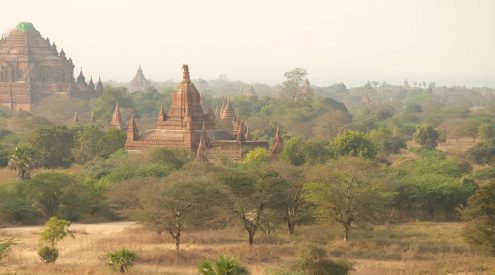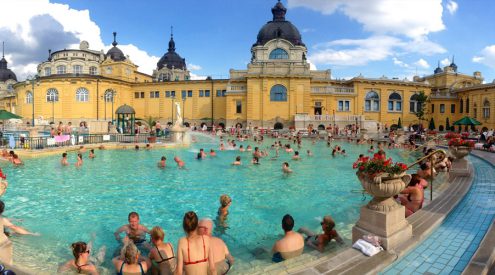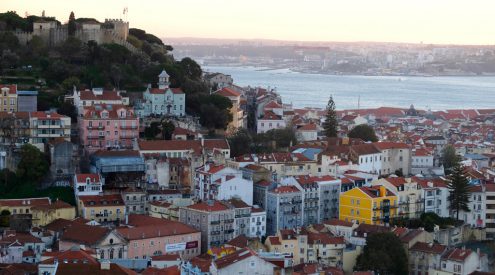From Dubai we flew to London, spent a few days there and then flew to Dublin, Ireland, for 5 days. After that we headed back to London for another three weeks. This post will be about our time in Dublin.
After a delayed flight, forgetting our toothbrushes and getting off the bus at the wrong stop, we finally made it to Dublin! We stayed with a friend of Justin’s from UCT and his Irish girlfriend. They have a very cosy place in Dublin itself and made us feel very welcome. So no tips on accommodation this time except that if you are travelling and can stay with a friend it helps a lot and is a friendly base to move around from.
There are a few “˜low-cost’ airlines operating in the UK, to Ireland and Europe such as Ryan Air and Aer Lingus. Be aware of these though as there are many hidden costs and they tend to be delayed, especially flights which are later in the day. To avoid any surprises we booked with Lufthansa but flew with their Star Alliance partner BMI. If you need transport from the airport to your accommodation, we recommend the Air Coach. You can get one way or return tickets and catch it from the airport to the city or vice versa.
Dublin is definitely colder than London at about 1-3°C in the day and the wind dropped the temperature even more. Hats, gloves and scarves are essential! The days are also slightly longer than London at the moment, with the sun setting closer to 5pm rather than 4pm. We were lucky with the weather and had four days of sun out of five and only one day of rain; very rare apparently.
As we only had 5 days in Ireland, we decided to stick to exploring Dublin and catching up with our friends. We kicked off exploring the city with a visit to 400-year-old Trinity College. The buildings are so old and beautiful, linked with cobble stone streets and patches of grass with ancient trees. The main attraction at Trinity is The Book of Kells which is the four gospels of the Bible written in Latin on calf skin and elaborately decorated by monks in about 800 AD. It was really fascinating and reminded us how much people will do to spread the gospel.
The other interesting part of the college was the long room in the library which is an old beautiful room with a vaulted ceiling. The long room houses 200 000 of the library’s oldest books which are reached by wooden staircases. The room is lined with marble busts and is a really romantic view of a very old college library! The long room is also home to an original copy of the Proclamation of the Irish Republic which started the 1916 Easter Uprising when Patrick Pearse read it out outside the General Post Office in O’Connell Street on Easter Sunday.
The next stop was the Guinness Storehouse at St James Gate, the original brewery of the black stout. It might be a bit touristy but it was a great visit and is well laid out. The storehouse is 7 floors high with a bar at the top with 360° views of Dublin city. It is a self-tour through the storehouse and starts with the ingredients used and the brewing process. You move up the floors going through transport of the finished product, advertising, responsible drinking, a taste test and how to pour the perfect pint. The entry ticket includes a pint of Guinness which you can enjoy when you learn to pour a pint or at the Gravity bar on the top floor. We really enjoyed the visit and sharing in the vision of Arthur Guinness. He was so positive about the success of his brew that he signed a 9000 year lease on the storehouse property. Imagine if we were all that positive? We highly recommend a visit! We didn’t get to the Old Jameson Distillery but heard it is really good as well. It is just across the river from the Guinness Storehouse so hop across if you can.
The next day we did a walking tour and made our way to Christ Church Cathedral via St Patrick’s Cathedral. It is a beautiful old cathedral which is still in operation and you can join in daily prayers for peace and Holy Communion. Next stop was Kilmainham Goal. Entrance includes access to the museum and an hour tour of the jail. We enjoyed an impressive tour by a very knowledgeable guide and learnt a lot about Irish history, including the potato famine of 1845-1850 and the Easter Uprising of 1916. It was pretty sad though, thinking of the people who had been imprisoned and suffered there, often for no more than stealing food to stop from starving. It was absolutely freezing in the jail and we cannot imagine what it must have been like when the jail was in use, when people were often only dressed in the rags they arrived in. The jail closed in 1924 and hasn’t been used since, but has been restored and is a national monument now.
We also went past Wood Quay which is the site of the original harbour built by the Vikings but were disappointed to find not much there anymore. Only a token piece of wood from the hull of a Viking ship marks the site. We had a bite to eat at Temple Bar which is a bit of a touristy area in the city but worth a look. Locals don’t tend to visit the ‘trendy pubs’ there but prefer a ‘pub for a pub’ that the tourists don’t know about. We had a nice meal there though.
After a slow start the next day, Saturday, we took a walk along the canal to St Stephen’s Green, a park in the city. For us, and most South African’s I imagine, the concept of frozen over lakes and rivers in winter is quite foreign. However, at St Stephen’s Green we experienced it first hand and realised it is quite real! The lakes in the park were almost completely frozen over and we spared a thought for the ducks and swans paddling past. After the park we walked through the high street shopping areas of Grafton and Nassau streets. We ended the afternoon with a hot chocolate and mixed berry scone in a cosy local coffee shop.
On Sunday we were fortunate enough to be able to get out into the country. Our friend took us about an hour North of Dublin to County Meath. Once you leave Dublin it doesn’t take long before you reach real country. The countryside was covered in snow that had melted and re-frozen, basically ice, and became slippery if a person had stood on it more than once. There were lots of sheep and cattle grazing outside even though it was freezing cold with ice everywhere. Lots of people were also out walking their dogs.
First stop was Newgrange which is one of 40 passage graves in the area which, at first glance, looks like a mound of grass circled by white stones. Newgrange, Dowth and Knowth are the three larger tombs, with the remaining 37 being smaller. Newgrange is older than the pyramids and is the only tomb that is open to tourists. The tomb is made of stones and has not leaked in 5000 years! The interesting thing about the tomb is that sunlight only enters the centre of the tomb on 21 December, the winter solstice, for 15min at 9am through a light box above the door. The other tombs also have a light box but some are positioned to receive light at sunset on the winter solstice and a few at the summer solstice. It was very interesting walking around and we enjoyed the views of the Boyne valley afforded by being on a hilltop.
Next stop was the Hill of Tara, seat of the high kings of Ireland. Tara is an open site in winter with tours only running in the summer months so we were free to wander around at our leisure. Although it is only a grassy hill with some interesting mounds on it, it was a very mystical place to visit. The 360° views of the valley from Tara are absolutely amazing and made magical by the surrounding fields covered in icy-snow. Sheep wander freely on the hill side and their cloven hoof prints can be seen in the ice. The different circles and mounds on the hill are places where the high kings of Ireland were said to be inaugurated, the banqueting hall and places of burial. Even if you believe that Tara is only a mythical site, it is still worth a visit!
We made it just in time to go around Trim Castle. We had missed the last tour for the day but the friendly curator allowed us to wander around the grounds as he was ‘still full of Christmas cheer’, lucky for us! It was sunset time and the warm glow of the setting sun added to the mystery of the castle. The castle, fortifications and grounds are mostly ruins now but one can still get an idea of what living there was like at that time. We really enjoyed this castle as it was clearly built for defence of the city and for protection of the people should there be a siege compared to the opulence of say the palaces of the Tudor times. All in all, it was a really great day and we are glad we were able to get out into the country. We highly recommend getting out of the city into the surrounds if you are able to. If you don’t have access to a car, day trips are available by various tour operators and can be booked at the information centre in the city centre.
Other impressions of Dublin are that it is really expensive and the Irish people are very friendly. Prices in London are mostly comparable to South Africa, but Dublin is rather expensive. The people are also extremely friendly and forgiving to tourists. We often don’t know which bus to take or how much it is but the bus drivers are infinitely patient, help you out and tell you where to go. One day we were standing on a street corner with our map out looking lost and a friendly lady approached us and asked if we needed help, how awesome is that? So when you hear that Irish people are friendly, it is not an exaggeration! We also loved listening to the Irish accents as we were walking around. There isn’t as good a train system as in London and Europe but the buses go everywhere and are pretty often. There is, however, the Dublin area rapid transport, or DART, and tram system. We walked to most places but did catch the odd bus when we knew which number to look for. The Irish are also proud of their history and successful citizens; everywhere you go there are pictures of and tributes to famous Irishmen and women, such as the writers.
On our next trip to Ireland we would like to get across to the West and Galway. Other things we missed in Dublin and aim to do next time are The Old Jameson Distillery, a walk down O’Connell Street to see the General Post Office (where the Easter Uprising started), The Spire and the Dublin Writer’s Museum.
Till next time!

















